Uranus, the planet second most distant from our Sun, has been described as mysterious, strange, and fairly unknown to those of us here on Earth. However, in astronomy, these terms are pretty relative. Compared to the remote, dark stretches of the early universe or oddball exoplanets dozens of light-years from our solar system, researchers actually know a lot about Uranus.
Tag: Exoplanets
Formation of super-Earths proven limited near metal-poor stars
In a new study, astronomers report novel evidence regarding the limits of planet formation, finding that after a certain point, planets larger than Earth have difficulty forming near low-metallicity stars.
Smithsonian Scientists Help Uncover How The Solar Wind Gets Its Energy
Since the 1960s, astronomers have wondered how the Sun’s supersonic “solar wind,” a stream of energetic particles that flows out into the Solar System, continues to receive energy once it leaves the Sun. Now, thanks to a lucky line up of two spacecraft currently in space studying the Sun, they may have discovered the answer.
Producing “artificial stars” to calibrate telescopes
Astronomy professor Jonathan Gagné will be part of the Landolt space mission, which involves solving problems caused by errors in astronomical calibrations.
Potential new worlds rescued by citizens of Earth! Early results of people-powered astronomy project ‘out of this world’
Eagle-eyed, armchair astronomers have almost certainly made a number of thrilling discoveries, including two possible Jupiter-sized ‘exoplanets’ – planets outside our solar system – in an international, citizen-science project run out of a UK university.
Researchers spying for signs of life among exoplanet atmospheres
The next generation of advanced telescopes could sharpen the hunt for potential extraterrestrial life by closely scrutinizing the atmospheres of nearby exoplanets, new research suggests.
New exoplanet-informed research sets clearer bounds on the search for radio technosignatures
A new study leverages the NASA Exoplanet Archive and planetary system simulations to make narrowband SETI searches more efficient.
Using cosmic weather to study which worlds could support life
As the next generation of giant, high-powered observatories begin to come online, a new study suggests that their instruments may offer scientists an unparalleled opportunity to discern what weather may be like on far-away exoplanets.
Gemini North Detects Multiple Rock-Forming Elements in the Atmosphere of a Scorching Exoplanet
Astronomers using the Gemini North telescope, one half of the International Gemini Observatory operated by NSF’s NOIRLab, have detected multiple rock-forming elements in the atmosphere of a Jupiter-sized exoplanet, WASP-76b. The planet is so perilously close to its host star that rock-forming elements — such as magnesium, calcium, and nickel — become vaporized and dispersed throughout its scorching atmosphere. This intriguing chemical profile provides new insights into the formation of planetary systems, including our own.
Gemini Norte detecta múltiples elementos que forman rocas en la atmósfera de un exoplaneta sumido en el infierno
Utilizando el telescopio de Gemini Norte, la mitad boreal del Observatorio Internacional Gemini, que opera NOIRLab de NSF y AURA, un equipo de astrónomos detectó diversos elementos formadores de rocas en la atmósfera de un exoplaneta del tamaño de Júpiter llamado WASP-76b. El planeta está tan peligrosamente cerca de su estrella que los elementos formadores de rocas, como el magnesio, calcio y níquel, se evaporan y se dispersan por toda su abrasadora atmósfera. Este intrigante perfil químico provee nuevos conocimientos sobre la formación de sistemas planetarios, incluido el nuestro.
One-third of galaxy’s most common planets could be in habitable zone
Our familiar, warm, yellow sun is a relative rarity in the Milky Way. By far the most common stars are considerably smaller and cooler, sporting just half the mass of our sun at most. Billions of planets orbit these common dwarf stars in our galaxy.
Found: a likely volcano-covered terrestrial world outside the Solar System
A large international team led by astronomers at the Trottier Institute for Research on Exoplanets at Université de Montréal (UdeM) today announced in the journal Nature the discovery of a new temperate world around a nearby small star.
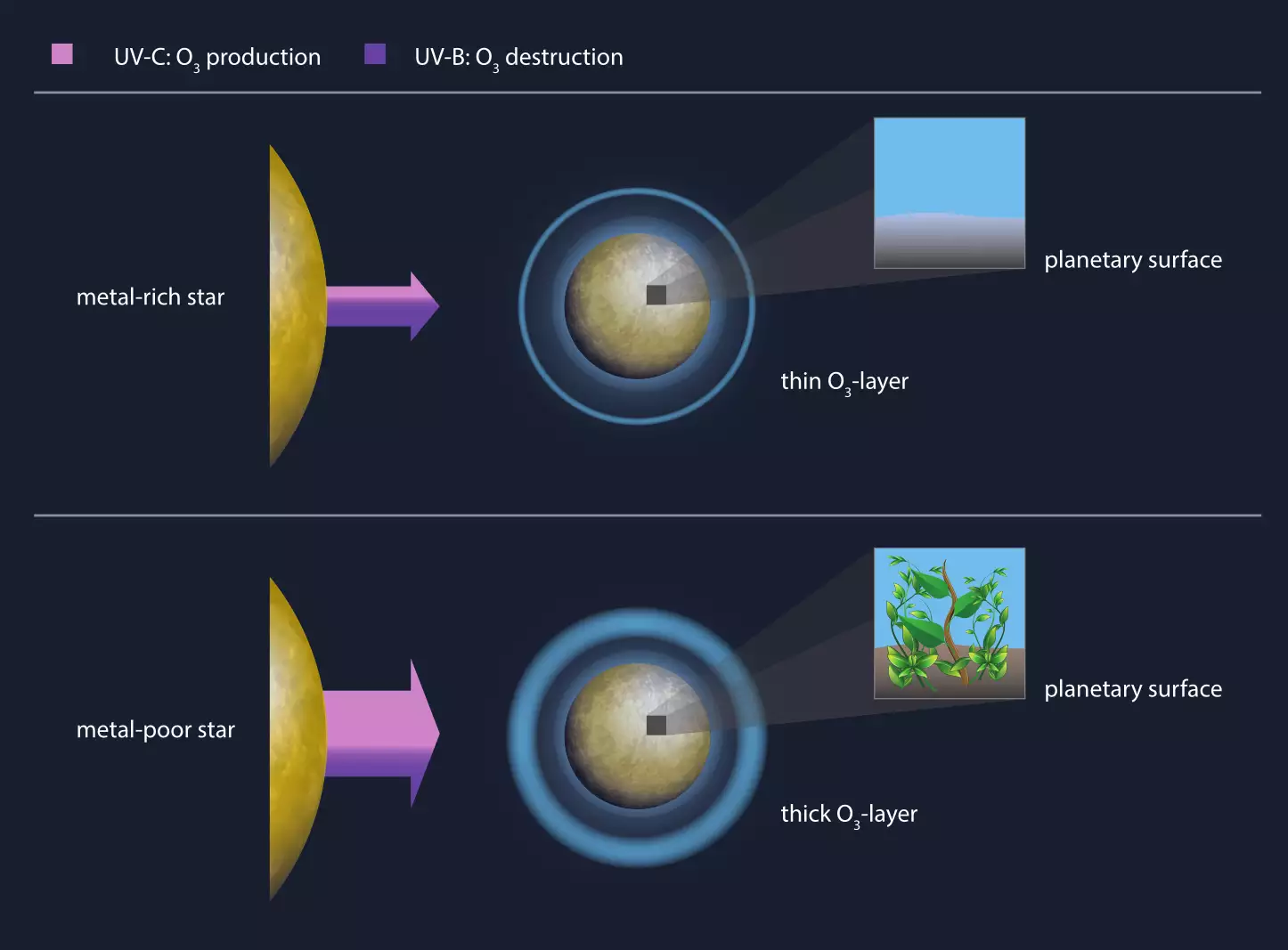
Metal-poor stars are more life-friendly
Stars that contain comparatively large amounts of heavy elements provide less favourable conditions for the emergence of complex life than metal-poor stars, as scientists from the Max Planck Institutes for Solar System Research and for Chemistry as well as from the University of Göttingen have now found.
JWST confirms giant planet atmospheres vary widely
An international team of astronomers has found the atmospheric compositions of giant planets out in the galaxy do not fit our own solar system trend.
‘Terminator zones’ on distant planets could harbor life, UC Irvine astronomers say
In a new study, University of California, Irvine astronomers describe how extraterrestrial life has the potential to exist on distant exoplanets inside a special area called the “terminator zone,” which is a ring on planets that have one side that always faces its star and one side that is always dark.
Team Aims To Find ‘Earth 2.0’
Are there other Earth-like planets? Is there extraterrestrial life? In the quest to find planets that orbit stars other than the sun, “Earth 2.0” is the Holy Grail. Earth 2.0 is a planet similar enough to Earth to enable the existence of life as we know it. It would be the right temperature for liquid water, and it would orbit a star with a steady supply of light.
Two Exoplanets May Be Mostly Water, NASA’s Hubble and Spitzer Find
Astronomers have uncovered a pair of planets that are true “water worlds,” unlike any planet found in our solar system. Slightly larger than Earth, they have global oceans at least 500 times deeper than the average depth of Earth’s oceans.
How the ‘hell planet’ got so hot
New research sheds light on how the “hell planet” got so devilishly hot and how other worlds might become too toasty for life.

Starshade Competition Challenges Students to Block Starlight for Observing Exoplanets
The Hybrid Observatory for Earth-like Exoplanets proposes pairing the newest and largest ground-based telescopes with a starshade orbiting Earth to obstruct the light from a host star to identify and characterize an exoplanet. AIP, with NASA and SPS, is organizing a competition for undergraduate students in the physical sciences to design such a starshade.
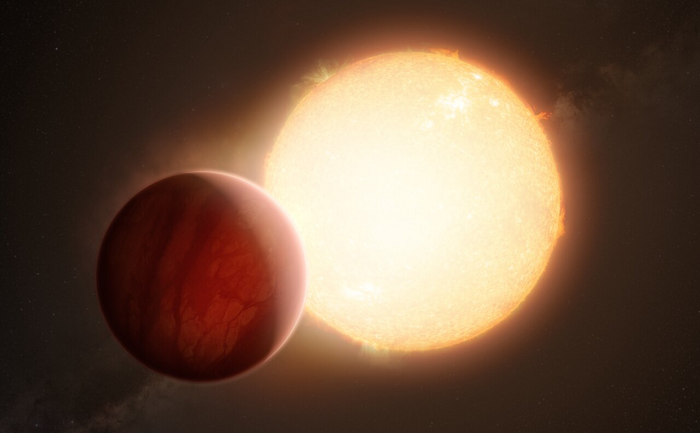
Heaviest element yet detected in an exoplanet atmosphere
Using the European Southern Observatory’s Very Large Telescope (ESO’s VLT), astronomers have discovered the heaviest element ever found in an exoplanet atmosphere — barium.
VLBA Produces First Full 3-D View of Binary Star-Planet System
Astronomers using the VLBA have produced the first-ever full, 3-D view of binary star system with a planet orbiting one of the stars. Their achievement promises important new insights into the process of planet formation.
A New Method to Detect Exoplanets
In recent years, a large number of exoplanets have been found around single ‘normal’ stars. New research shows that there may be exceptions to this trend.
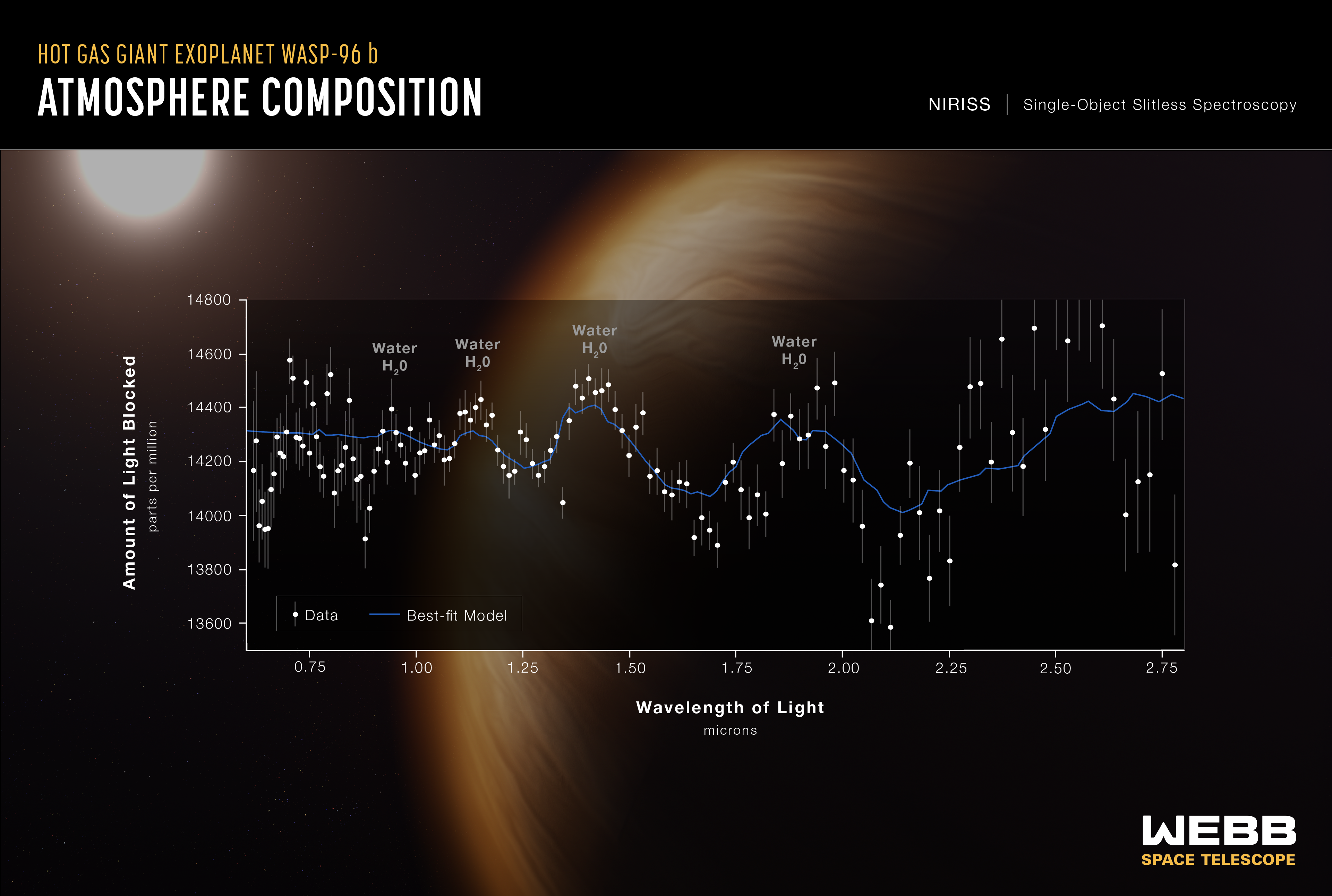
NASA’s Webb Reveals Steamy Atmosphere of Distant Planet in Exquisite Detail
In a dream come true for exoplaneteers, NASA’s James Webb Space Telescope has demonstrated its unprecedented ability to analyze the atmosphere of a planet more than 1,000 light-years away. Webb has – in a single observation – revealed the unambiguous signature of water, indications of haze, and evidence for clouds that were thought not to exist based on prior observations.
Why haven’t we discovered co-orbital exoplanets? Could tides offer a possible answer?
In our solar system, there are several thousand examples of co-orbital objects: bodies that share the same orbit around the Sun or a planet.
Gravity telescope to image exoplanets
In the time since the first exoplanet was discovered in 1992, astronomers have detected more than 5,000 planets orbiting other stars.
Classifying exoplanet atmospheres opens new field of study
An international team of researchers examined data for 25 exoplanets and found some links among the properties of the atmospheres, including the thermal profiles and chemical abundances in them.
Need for Larger Space Telescope Inspires Lightweight Flexible Holographic Lens
Inspired by a concept for discovering exoplanets with a giant space telescope, a team of researchers is developing holographic lenses that render visible and infrared starlight into either a focused image or a spectrum.
Superflares may be less harmful to exoplanets than previously thought, study shows
Astronomers have long suspected that superflares, extreme radiation bursts from stars, can cause lasting damage to the atmospheres — and thus habitability — of exoplanets. A new study published in the Monthly Notices of the Royal Astronomical Society reports that they pose only a limited danger to planetary systems.
Life in these star-systems could have spotted Earth
Scientists at Cornell University and the American Museum of Natural History have identified 2,034 nearby star-systems – within the small cosmic distance of 326 light-years – from which life could find Earth merely by watching our pale blue dot cross our sun.
STScI to Host Science Writers’ Workshop: Towards the Comprehensive Characterization of Exoplanets
On Monday, April 19, 2021, journalists are invited to attend a virtual workshop for science writers on characterizing planets orbiting other stars. The workshop is hosted by the Space Telescope Science Institute (STScI) in Baltimore, Maryland.
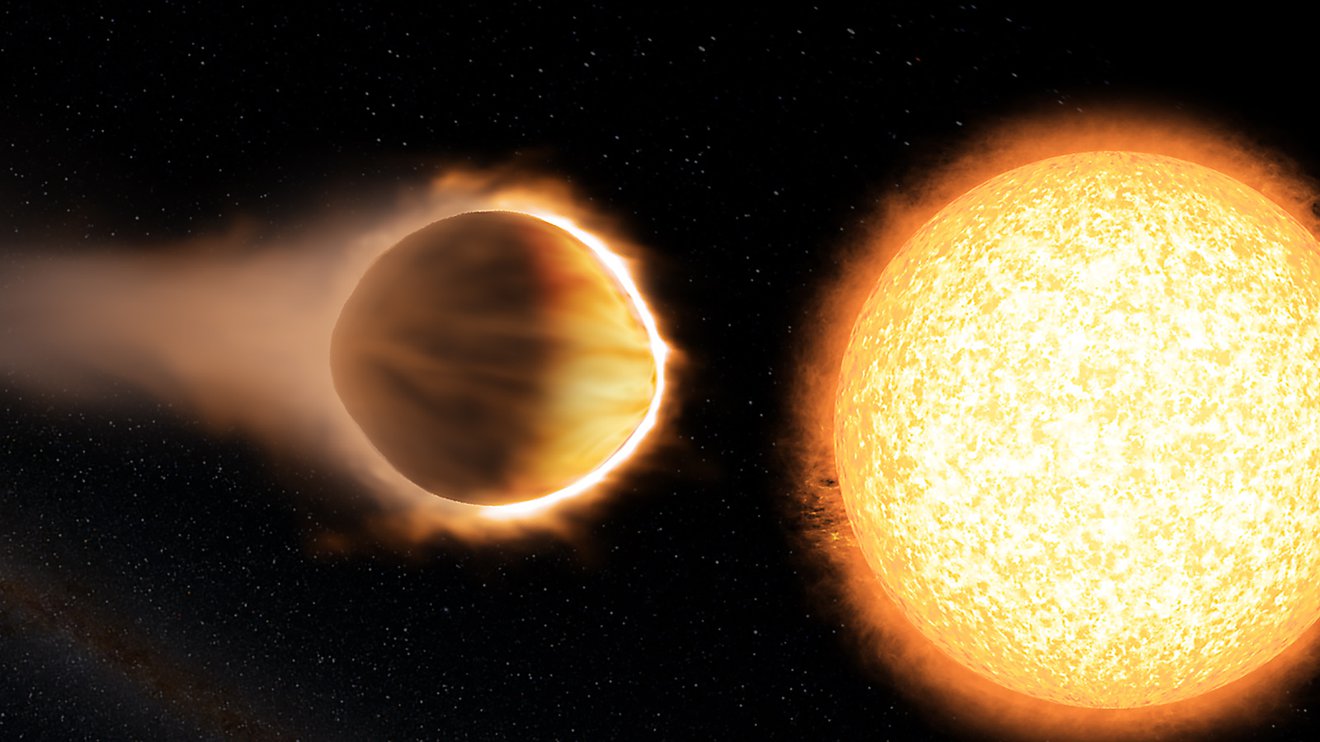
There might be many planets with water-rich atmospheres
A new study by University of Chicago and Stanford University researchers suggests that hot, rocky exoplanets could not only develop atmospheres full of water vapor, but keep them for long stretches.
Giant lasers compress iron oxide, revealing the secret interior structure of rocky exoplanets
Advances in astronomical observations have resulted in the discovery of an extraordinary number of extrasolar planets, some of which are believed to have a rocky composition similar to Earth. Learning more about their interior structure could provide important clues about their potential habitability. Led by Lawrence Livermore National Laboratory (LLNL), a team of researchers aims to unlock some of these secrets by understanding the properties of iron oxide – one of the constituents of Earth’s mantle – at the extreme pressures and temperatures that are likely found in the interiors of these large rocky extrasolar planets.
Astronomers detect possible radio emission from exoplanet
By monitoring the cosmos with a radio telescope array, a Cornell University-led international team of scientists has detected radio bursts emanating from the constellation Boötes. The signal could be the first radio emission collected from a planet beyond our solar system.

American Institute of Physics Announces 2020 Science Communication Award Winners
The American Institute of Physics recognizes the winners of the 2020 Science Communication Awards for their topical works on reshaping our world, recognizing forgotten women in science, searching for knowledge, and hunting down black holes. The 2020 winners are Susan Hockfield, Joshua Sokol, Curtis Manley, and Catalyst.
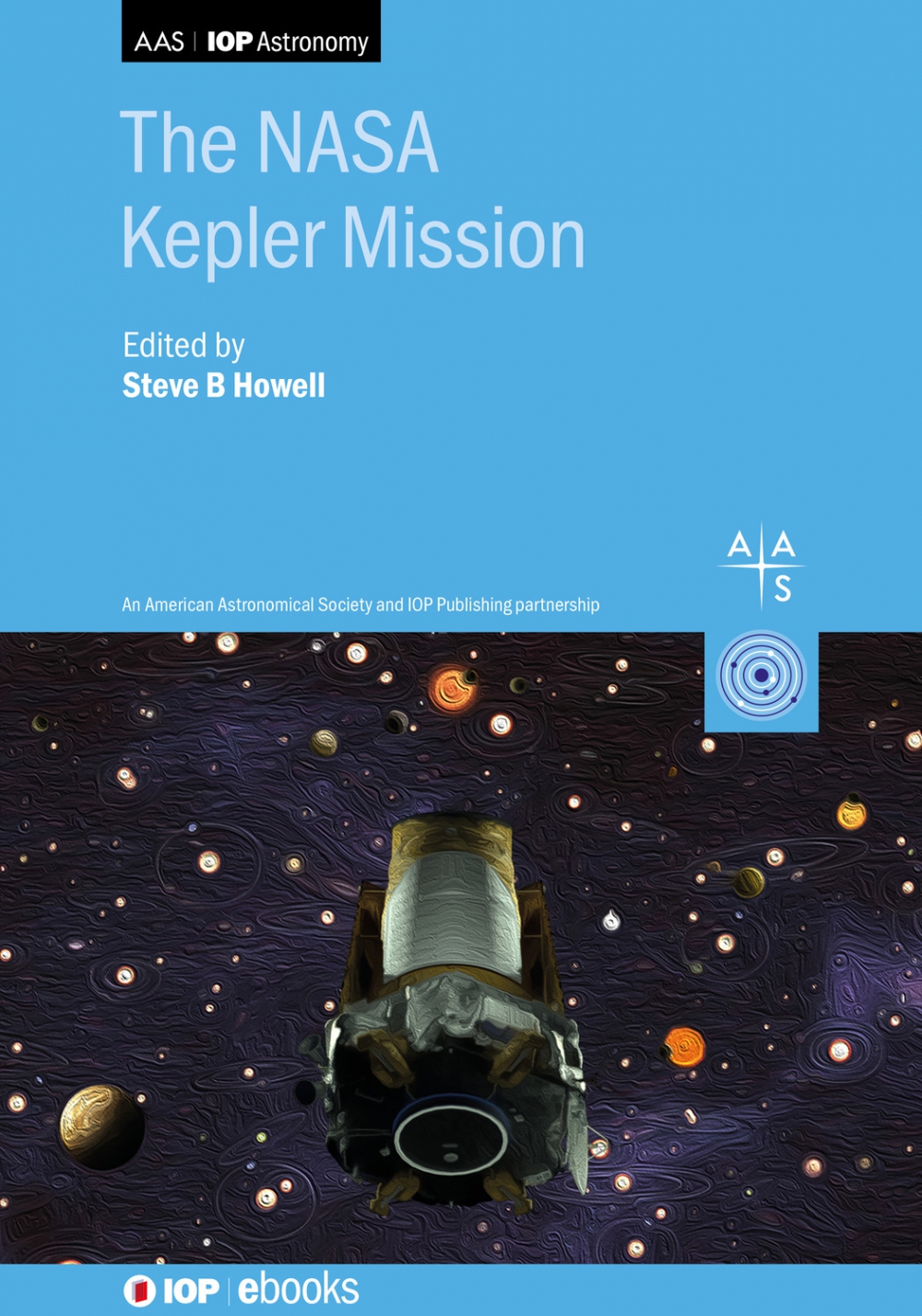
“The NASA Kepler Mission” book: Planet hunting, star studies and, “Are we alone?”
A new book chronicles the scientific discoveries of NASA’s Kepler and K2 missions. It also asks some big questions: “Are we alone? What is our place in the Universe?”
Exoplanet climate ‘decoder’ aids search for life
After examining a dozen types of suns and a roster of planet surfaces, Cornell University astronomers have developed a practical model – an environmental color “decoder” – to tease out climate clues for potentially habitable exoplanets in galaxies far away.
Astronomers could spot life signs orbiting long-dead stars
To help future scientists make sense of what their telescopes are showing them, Cornell University astronomers have developed a spectral field guide for rocky worlds orbiting white dwarf stars.
Researchers use ‘hot Jupiter’ data to mine exoplanet chemistry
After spotting a curious pattern in scientific papers – they described exoplanets as being cooler than expected – Cornell University astronomers have improved a mathematical model to accurately gauge the temperatures of planets from solar systems hundreds of light-years away.
Paired with super telescopes, model Earths guide hunt for life
– Cornell University astronomers have created five models representing key points from our planet’s evolution, like chemical snapshots through Earth’s own geologic epochs. The models will be spectral templates for astronomers to use in the approaching new era of powerful telescopes, and in the hunt for Earth-like planets in distant solar systems.
From infrared views to exoplanets: Spitzer leaves lasting legacy
NASA’s Spitzer Space Telescope has studied the universe in infrared light since its launch in 2003, and at the end of this month its mission will come to an end — leading NASA and astronomers worldwide to reflect on the…
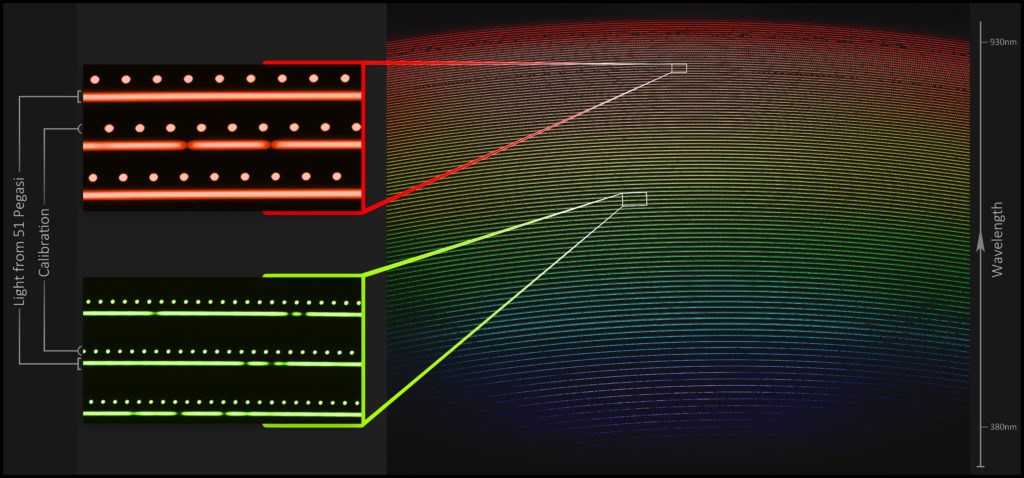
NEID Exoplanet Instrument Sees First Light
The new NEID instrument, now installed at the 3.5-meter WIYN telescope at Kitt Peak National Observatory in Southern Arizona, USA, has made its first observations. The NSF-NASA funded instrument is designed to measure the motion of nearby stars with extreme precision — roughly three times better than current state-of-the-art instruments — allowing us to detect, determine the mass of, and characterize exoplanets as small as Earth.
Gaseous disk around white dwarf ‘intriguing’ find for exoplanet hunters
An international team of scientists has reported in the journal Nature that they’ve discovered evidence of a gaseous disk around a white dwarf star — expanding astronomers’ understanding of planetary bodies that can exist around white dwarfs. Lisa Kaltenegger, who…